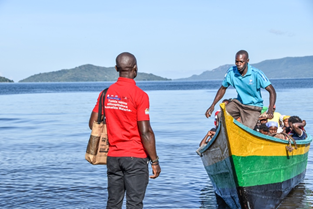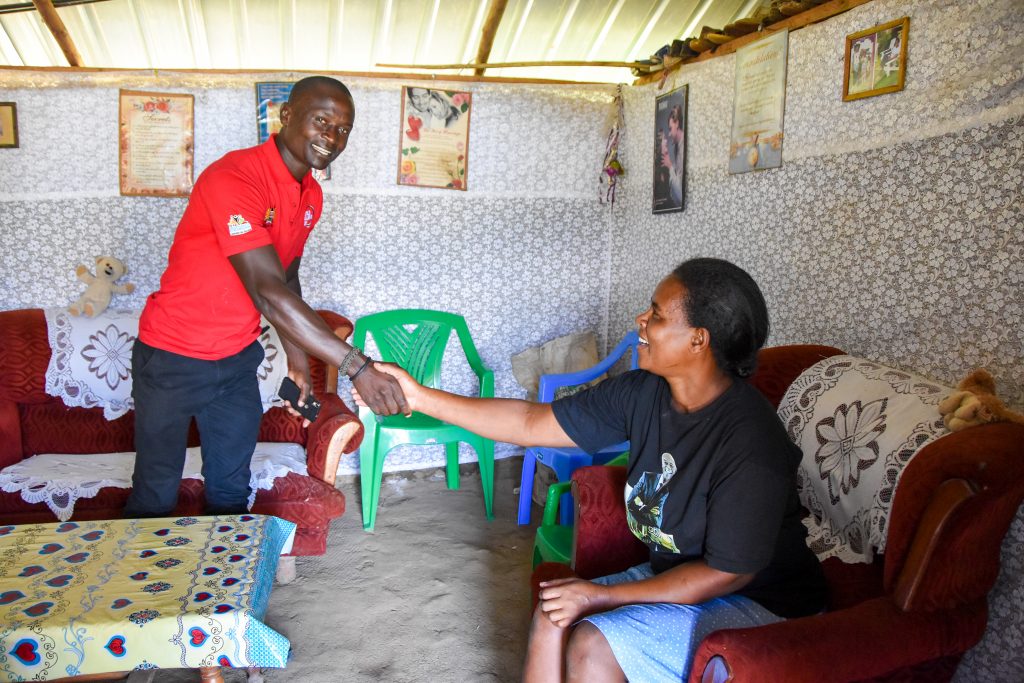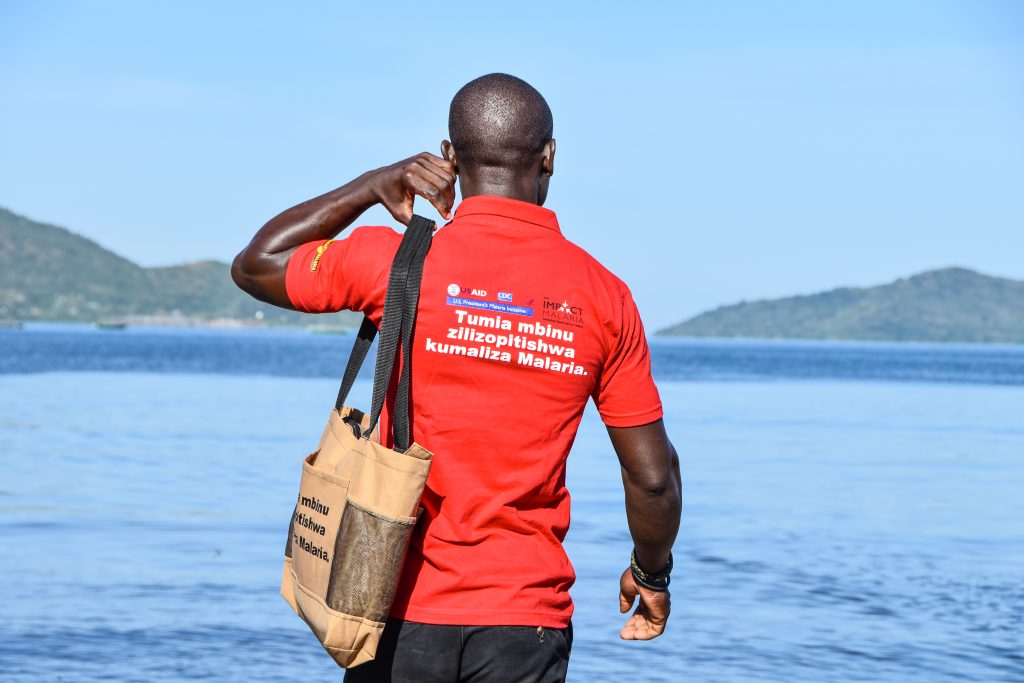The scenic view of Lake Victoria welcomes you to the township of Sindo, in Kenya’s southwest corner. Colorful wooden fishing boats line the shore as groups gather to negotiate the sale of fish.
Women clean dishes while keeping a watchful eye on their children playing in the shallow water. Other women balance buckets of fish on their head as they depart for the market. It’s 7 a.m. and the bay has been a flurry of activity for three hours already.
The journey to this part of Kenya—the Suba sub-county in Homa Bay County—is long. The road network is rugged and the only way to access Suba’s six islands is by boat.
Suba has a beautiful landscape but also, unfortunately, a very high incidence of malaria—a disease which, if not prevented and promptly treated, often leads to death and is a leading killer of children and pregnant women in this region.
Health care that’s a boat ride away
To access health care services from any of the six islands, residents must take a boat to the mainland. This can be costly and often impractical.
To create a stronger link between communities and malaria health care services—in Suba sub-county but also in other areas of the country—Kenya’s national malaria program has been working with county health management teams to train community health volunteers (CHVs) and community health assistants (CHAs).
Through these trainings funded by the U.S. President’s Malaria Initiative (PMI), the Kenyan government has enhanced the capacity of 268 CHVs and 28 CHAs to identify and address signs of malaria, especially among children and pregnant women—the most vulnerable groups affected by malaria.
A Man on a Mission
“I noticed that my neighbors had very little information on illnesses common to our region, such as malaria,” Eric says. “The issue of access to basic health care was also very limiting, especially for pregnant women and mothers with young children.”
Eric felt strongly that he could be a link between his community and the information they needed to make informed health choices and adopt positive health-seeking behavior.
As a trained CHV, he taught families about the symptoms and dangers of malaria and explained the importance of sleeping under an insecticide-treated bed net. He mapped out homes with young children and pregnant women and embarked on a door-to-door campaign.
He discovered that out of the six women who were pregnant at the time, only one was attending antenatal visits. Antenatal care is crucial for preventing malaria in pregnancy because it’s during these visits with a health care provider that women receive a bed net and take anti-malaria pills.
To help convince his clients to attend monthly pregnancy visits, Eric reached out to the women as well as their spouses. “I knew that in order to succeed, I also needed to involve the men from the beginning,” he recounts.
Eric went a step further and registered all children under five years of age and expectant mothers at the Nyamrisra health facility—the only health facility accessible to residents of Kibuogi island—for follow up. Looking back, Eric is proud of how far his village has come. All the expectant mothers have started receiving the recommended doses of anti-malaria medication.
Asked why he keeps doing what he does, Eric says simply, “It’s for my people. I love my community and I want to help people in my village. I want to connect them with information so that they can know what is available to them. I am empowered and so I want to empower others.”
Written by Catherine Ndungu, PMI Impact Malaria (IM) Kenya. Contributions from Alexander Kaluoch and Moses Kidi, Jhpiego; and Anne Bulchis, IM Communications Manager.
All photos credited to Catherine Ndungu, PMI Impact Malaria.



